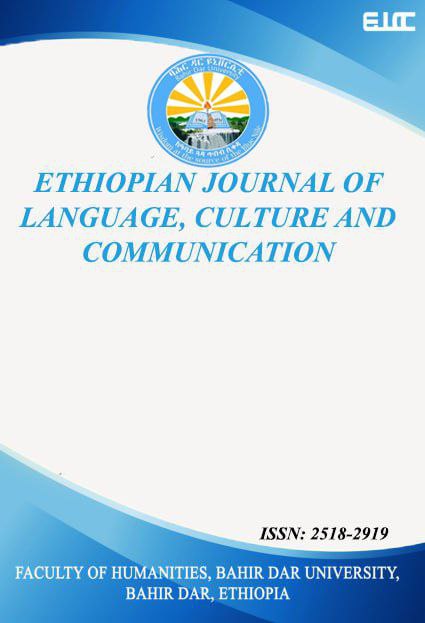Media Framing of Amhara Protests: The Case of Amhara Television and Aljazeera
Abstract
The study looked into the framing of the 2016 Amhara protest in Ethiopia by Amhara Television (ATV) and Aljazeera. The research employed mixed approaches and employed themes, frames, sources, tone, and media functions as categories. The findings reveal that ATV reports focused on reducing unrest and government initiatives, but Aljazeera focused on ethnic tensions, human rights, and the magnitude of the crisis. Regarding frame types, Aljazeera mostly used diagnostic framing and human-interest framing, while ATV used mainly economic framing, prognostic framing, and morality framing. Moreover, Aljazeera often employed victims' families and opposition groups, but ATV commonly used religious leaders and government officials as news sources. In terms of media roles, Aljazeera focused on stating the cause, whereas ATV paid more attention to proposing remedies. Both, however, paid equal attention to articulating and defining the problem. As for the tone of the stories, Aljazeera was positive about the public protest, but ATV condemned the persistence of the protest. Besides, Aljazeera and ATV showed different understandings regarding the causes and solutions to the problem. Finally, these differences in framing occurred because of the differences in organizational culture, editorial policy, and the general media philosophy adhered to by journalists in their respective media.
Authors who publish with this journal agree to the following terms:
- Authors retain copyright and grant the journal right of first publication with the work simultaneously licensed under a Creative Commons Attribution License that allows others to share the work with an acknowledgement of the work's authorship and initial publication in this journal.
- Authors are able to enter into separate, additional contractual arrangements for the non-exclusive distribution of the journal's published version of the work (e.g., post it to an institutional repository or publish it in a book), with an acknowledgement of its initial publication in this journal.
- Authors are permitted and encouraged to post their work online (e.g., in institutional repositories or on their website) prior to and during the submission process, as it can lead to productive exchanges, as well as earlier and greater citation of published work (See The Effect of Open Access).


